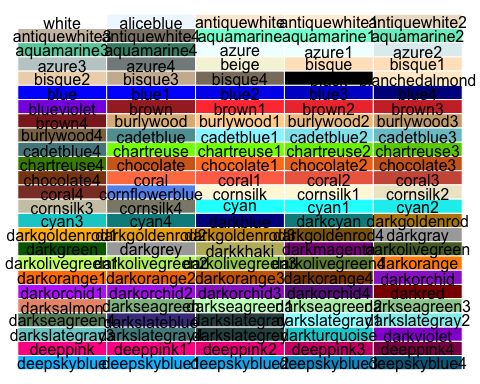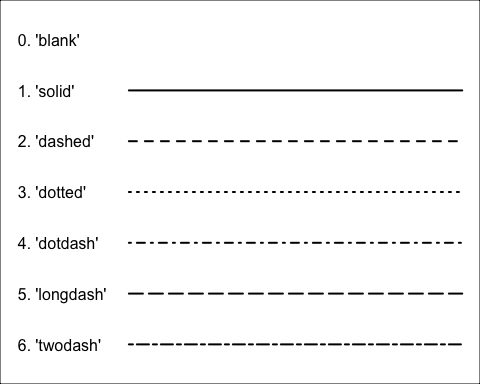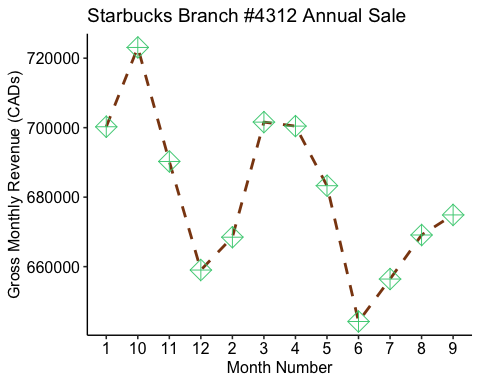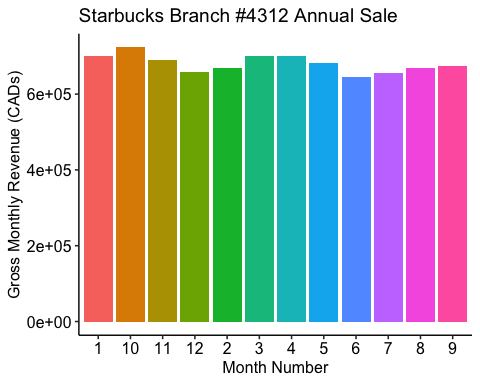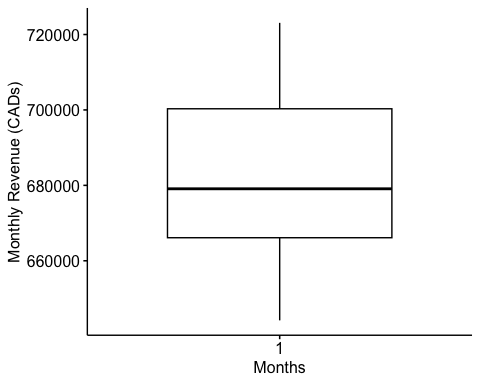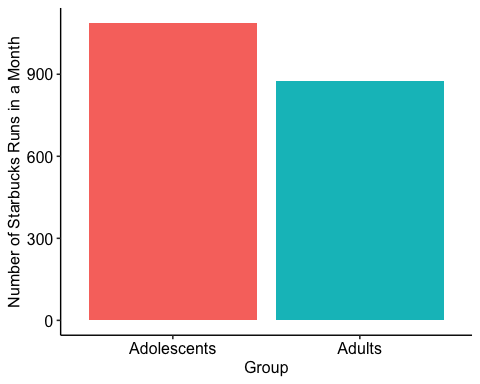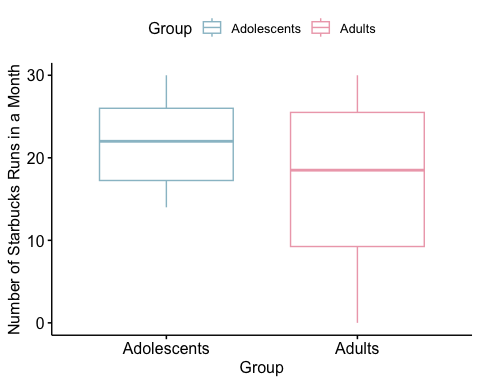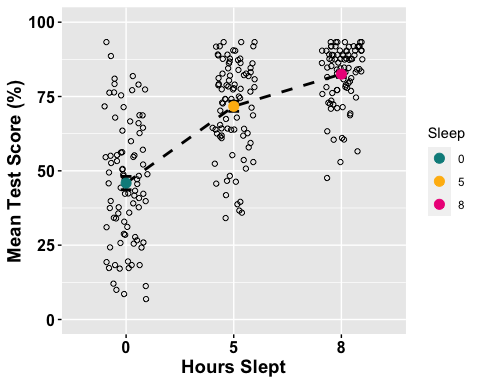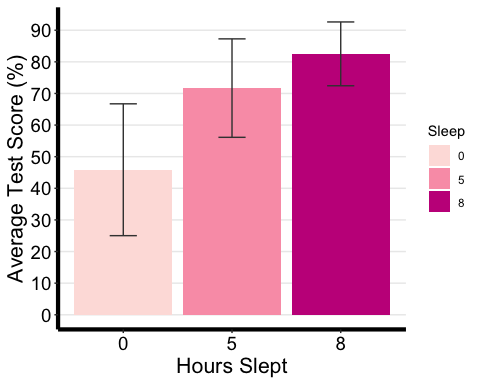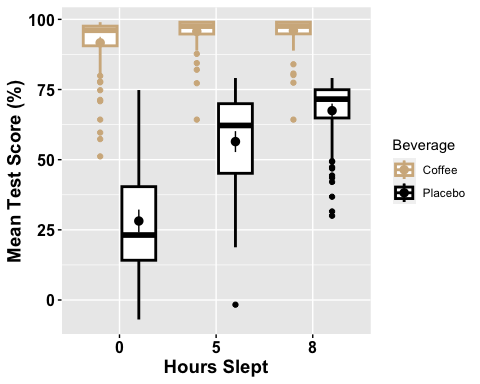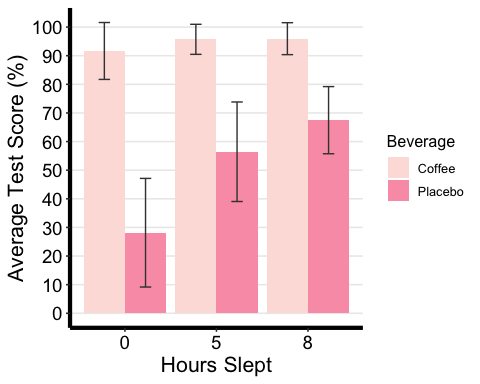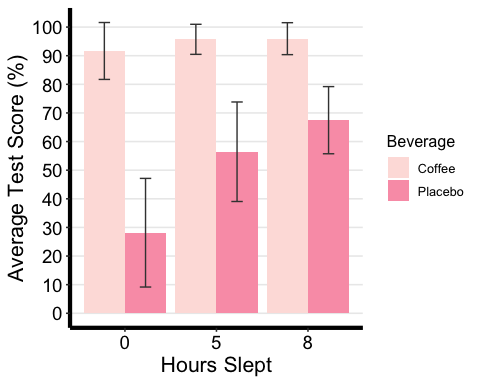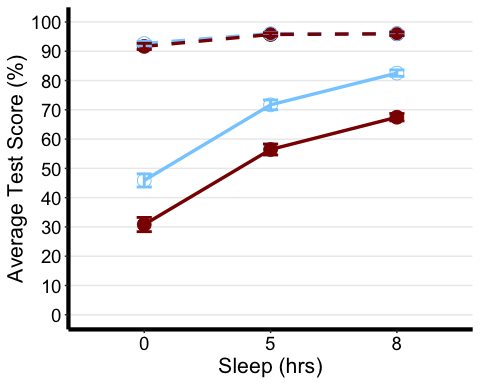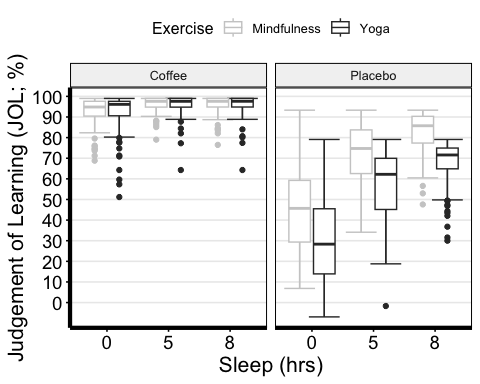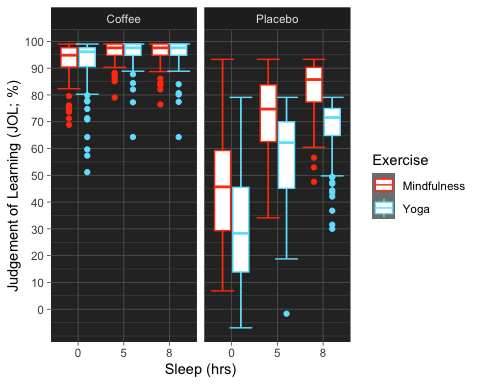As a first-year Ph.D. student in Cognitive Psychology, I often find myself reflecting on my academic journey thus far. The pivotal moments of completing thesis projects during both my undergraduate and graduate studies have left an enduring mark on me. These weren’t just boxes to check off on my academic to-do list; they were transformative experiences that shaped my understanding, skills, and vision for the future.
As a first-year undergrad in general life sciences, I was steadfast in my decision to major in chemistry by my second year, given that it was my favourite subject in high school. My long-term aspiration was to complete a co-op program at a chemical or pharmaceutical company in the final years of my undergrad, preferably a cosmetic company, and enter the workforce after graduation. However, my required psychology courses piqued my interest more, and after becoming involved in several labs in my undergrad, including a biology lab, a neuroscience lab, and a cognitive psychology lab, where I ended up completing my undergrad thesis, master’s, and now doctoral studies. I found myself pursuing a career in academia. I found my undergraduate and graduate thesis projects rewarding, and I loved learning the technical skills required to become an independent researcher.
All that is to say, my thesis projects transformed my career aspirations and the trajectory of my life. I advocate for all students to embark on this journey, not only for those eyeing a future in academia but also for anyone aiming to enter the industry armed with a broad array of skills that are highly coveted by employers. In this chapter, I aim to explore the comprehensive significance of thesis projects, drawing not only from my journey but also considering the wider impact on students at varying academic junctures.
Cultivating Curiosity
As children, it is in our nature to be curious. To venture out into the world and discover a world of our own. Guided by our parents and loved ones, we embark on a grand project of discovery, feeding our imaginations with endless questions about the world and everything in it. However, with age, this innate curiosity often diminishes, gradually overshadowed by societal expectations and other obligations. However, the realm of research offers a unique opportunity to rekindle this dormant curiosity. It invites you to delve into any topic that sparks your interest, to learn, speculate, and uncover new truths.
For me, my thesis was far more than a degree requirement; it was a journey that reignited a deep-seated curiosity about the human mind. It was an opportunity to delve into the mysteries of cognitive psychology, exploring complex questions and contributing to the broader conversation of understanding.
In essence, academic research is more than just an assignment; it’s a venture back into the innate curiosity we all had as children. It’s an opportunity to challenge yourself, to learn, to question, and ultimately, to grow not just as a student but as a thinker and innovator. It’s a journey that prepares you not only for the academic challenges of a thesis but for a lifetime of inquiry and discovery.
So, as you begin your thesis journey, I encourage you to embrace this opportunity. Dare to be curious. Allow yourself to be drawn to the topics that fascinate you, to learn deeply about them, and to discover new facets of the world and yourself. This is not just an academic endeavour; it’s a personal quest, a chance to reconnect with the wonder that once defined your view of the world. Your thesis can be more than a requirement; it can be a renewal, a rediscovery, and a remarkable journey of intellectual and personal growth.
Advancing Knowledge & Expertise: Breaking the Mold of Traditional Learning
Academic research, particularly at the undergraduate level, offers a dynamic extension to traditional classroom education. While lectures and textbooks lay the essential groundwork for understanding, it’s the hands-on, experiential learning through research that truly animates these theoretical concepts. Engaging in research projects means witnessing firsthand the practical application of knowledge, elevating your comprehension and appreciation of the subject matter.
Incorporating research methodologies and the hypothesis-driven process into your academic journey does more than build upon the foundation laid by your coursework. It cultivates independent critical thinking skills and enhances both oral and written communication abilities. As you delve into research, you develop the confidence to formulate and defend your conclusions based on evidence. Over time, you’ll not only understand the rationale behind other researchers’ studies, including their methodologies and outcomes, but you might also find yourself contemplating follow-up experiments.
For instance, it’s a universally shared experience: nearly all of us, at some point in our high school or even middle school years, have been introduced to the scientific method. These fundamental steps of research are often presented to us repeatedly, in various formats and fonts on our instructors’ slides. However, I firmly believe that one can never fully comprehend the depth and nuances of the scientific method until they’ve navigated its complexities firsthand. Engaging in your undergraduate thesis offers this exact opportunity. My undergraduate thesis was my first genuine venture into the realm of independent research — a truthfully daunting yet thrilling endeavour. It was during this time that I truly began to understand the art of hypothesis formulation and the rigorous, detailed nature of empirical research. This experience isn’t just about understanding the scientific method; it’s about living it.
Leave it to researchers to research the benefits of doing research. A loaded sentence I know, but empirical evidence supports the positive impact of undergraduate research on classroom learning. For instance, students who pursued research within their academic department reported significant enhancements in their independence, motivation, and engagement (Lopatto, 2007). They also noted a heightened capacity for independent thought and generating original ideas. Furthermore, some academic departments mandate an independent research project or senior thesis. This represents an original and self-reliant research endeavour aiming to synthesize the knowledge acquired within your major into a formal academic article.
Thesis Project: Your Golden Ticket to Mentorship Par Excellence
Engaging with professors is one of the most significant benefits of undertaking a research project. These individuals, who have navigated the very paths we tread, offer an invaluable resource, a well of wisdom from which we can draw. Through research, you’re granted the golden opportunity to form one-on-one bonds with these mentors, relationships that can shape your academic journey and beyond.
These seasoned academics become much more than just instructors; they are guides, advisors, and sometimes even lifelong contacts. They impart not only domain-specific knowledge but also the subtler, yet crucial, principles of research ethics, tenacity, and intellectual rigor. They teach you how to question, how to think critically, and how to persist when the research becomes challenging. Their guidance is not just about helping you navigate your current project; it’s about instilling a mindset, a way of thinking and approaching problems that will serve you well throughout your career.
Moreover, these mentorship relationships often go beyond the academic realm. Professors can provide insights into the world of academia and beyond, offering advice on career paths, networking, and life after university. They can open doors, recommend you for opportunities, introduce you to colleagues, and endorse your capabilities. Their support can be a pivotal factor in your academic and professional development.
But remember, mentorship is a reciprocal relationship. It’s not just about what you can learn from them, but also about what your fresh perspective and enthusiasm bring to the table. Your work can contribute new ideas and energy to their research, creating a dynamic partnership where both mentor and mentee benefit and grow. This symbiotic relationship forms the bedrock of undergraduate and graduate research, creating a vibrant academic community fueled by shared curiosity and the pursuit of knowledge. Engaging deeply with your professors and mentors is not just an opportunity; it’s a privilege that can transform your academic experience, opening up new horizons and laying the foundations for a future rich with potential.
Harnessing Mentorship: The Power of Personalized Recommendations
Professors and mentors, especially those who have collaborated closely with you during your research, are arguably the best sources for personalized and detailed recommendations. Their close working relationship with you means they have witnessed your academic journey first-hand. They can vouch for your specific contributions, accomplishments, and personal growth with an authenticity and depth that others simply cannot match.
These tailored recommendations hold significant weight. When a professor speaks to your unique qualities, dedication, and the specific ways you’ve contributed to a research project, it paints a vivid, compelling picture of your capabilities and potential. It’s one thing for a reference letter to say you’re diligent and intelligent; it’s another entirely for it to detail how you problem-solved under pressure, innovated research methods, or contributed original ideas that significantly impacted the project’s outcome.
Furthermore, these mentors can reflect on your journey, highlighting not just where you excelled but also where you faced challenges and grew as a result. This narrative of growth is incredibly powerful, illustrating your resilience, adaptability, and commitment to continuous learning. Such insights make your reference letters not just summaries of your past achievements but also endorsements of your future potential.
In essence, the recommendations from professors and mentors who have worked closely with you are more than just letters; they are testaments to your character, intellect, and potential. They provide a nuanced, comprehensive view of your capabilities and experiences, making your applications for further study, scholarships, or jobs markedly more compelling and distinctive. These are the endorsements that can set you apart in a sea of candidates, opening doors to new opportunities and paving the way for continued success.
The Social Network: Making Connections
Extending from the individual mentorship provided by professors, research inherently fosters a culture of collaboration. As a researcher, you’re not just working in isolation; you’re becoming part of a vibrant, interconnected lab community. You will forge connections with fellow students, graduate students, and experts in your field, each relationship offering its unique value and perspective.
Participating in research provides a platform for active engagement with a broader academic community. You’ll have the opportunity to attend lab meetings, departmental research symposiums, conferences, and workshops, where you can present your findings and engage in dialogue with like-minded individuals from diverse universities and disciplines. These events are not just about showcasing your work; they’re about immersion in a communal pool of knowledge, ideas, and inspiration. The conversations you have and the contacts you make can spark new ideas, lead to collaborative projects, or even reshape the direction of your research.
For example, in 2022, I was privileged to attend a conference in Halifax, where I presented my research. This conference wasn’t just an academic forum; it was a vibrant meeting ground that allowed me to connect with fellow researchers from various institutions across Canada, many of whom were delving into the same areas of interest as me. It was an invigorating experience, made even more remarkable by Halifax’s stunning scenery and the memorable bonding moments shared with my peers. These interactions not only broadened my academic network but also enriched my understanding and enthusiasm for my field, making it an unforgettable part of my research journey.
Moreover, the well-established networks of your professor can unlock doors to opportunities that might otherwise remain closed. Take, for example, my supervisor’s enduring collaboration with researchers in Spain. This partnership has fostered an exchange program, allowing students from his colleagues’ lab to visit ours in Canada, and conversely, offering us the chance to study abroad in Spain. This isn’t just about swapping locations; it’s a reciprocal cultural and academic exchange. Recently, a colleague from our lab seized this opportunity, spending several months in Spain conducting his research. During this time, he didn’t just advance academically; he also deeply immersed himself in a new culture, an experience that enriched his personal and professional growth in unparalleled ways.
In essence, the collaborative nature of research doesn’t just enrich your current project; it opens doors to a world of possibilities. Each connection is a seed that, with nurturing, can grow into opportunities for internships, job offers, and future research collaborations. They represent the beginnings of your professional network, a web of contacts that can provide support, advice, and opportunities throughout your career. Engaging actively and positively with this community, you’re not just building a network; you’re joining a dynamic, global community of scholars and professionals.
From Curiosity to Career: Thesis Studies as the Gateway to Graduate School
Participating in thesis research is not just an academic exercise; it’s a strategic move in career planning and a prelude to potential graduate studies. This was certainly the case for me. From undergraduate studies to a master’s, and now to doctoral studies, and hopefully soon to a faculty position and my own lab! As you immerse yourself in research within a field that captures your imagination, you might find your academic and career path becoming clearer. This initial foray into research can ignite a passion so profound that it reshapes your academic focus, leading you to major or minor in that area. It’s a process of self-discovery, where the subject you research might just become the subject you dedicate your life to.
Furthermore, for those considering graduate studies, thesis work serves as an invaluable stepping stone. It’s a taste of what graduate studies has in store for you. Engaging in research early in your academic journey provides you with a robust foundation in research methodologies, literature reviews, and scholarly writing. These skills are not just prerequisites for graduate studies; they are the tools that will enable you to excel.
Graduate programs often regard research experience as a testament to a candidate’s potential. By starting your research journey early, you’re not just building a portfolio; you’re enhancing your proficiency and shaping yourself into a promising candidate for advanced studies. Your early and sustained engagement in research sets you apart, showcasing your commitment and evolving expertise, thereby boosting your prospects of thriving as a researcher in the future.
However, it’s crucial to approach the decision to pursue graduate studies with deliberate consideration. Unfortunately, some undergraduates, unsure of their post-graduation path, view graduate school as the default next step, a perspective that can lead to misaligned expectations and dissatisfaction (Madan & Teitge, 2013). This is where the true value of early research experience comes to light. By engaging in research during your undergraduate years, you gain firsthand insight into the world of academic inquiry. This experience provides a clearer picture of what graduate studies entail, helping you make an informed decision about whether this path aligns with your personal and professional goals.
In essence, undergraduate research is more than just an academic endeavour; it’s a formative experience that can significantly influence your career trajectory. It helps you discover your passions, prepares you for the rigours of graduate studies, and ensures that any decision to pursue further education is well-informed and aligned with your long-term aspirations. It’s an opportunity to explore, to grow, and to set the stage for a future rich with academic and professional achievements.
The Research Résumé: Crafting a Career from Curiosity
Speaking of career planning. Thesis research can significantly enhance your resume, adding a distinctive flair that sets you apart. Prospective employers and graduate programs highly value candidates with research experience. This experience doesn’t just signify that you’ve spent time in a lab or poring over data; it indicates a range of competencies and qualities that are highly sought after in the professional world.
When employers and academic selection committees see research experience on your CV, they see a candidate who has engaged deeply with complex problems and who possesses the persistence and creativity to overcome them. They see someone who has been exposed to critical thinking, analytical skills, and meticulous attention to detail. They recognize an individual who understands the value of evidence-based decision-making, a crucial skill in virtually any field.
Moreover, research experience implies that you’re a self-starter, someone who’s motivated and capable of independent work. It suggests that you’re not just a passive learner but an active seeker of knowledge, ready to take on the challenges that lie ahead. Your research background tells a story of a person who’s prepared to ask questions, seek answers, and contribute meaningfully to their field. It positions you as a candidate who’s ready to hit the ground running, bringing a rich set of skills and experiences to any role or academic program.
In short, your participation in research is more than just a line on your resume; it’s a testament to your capacity to tackle complex challenges, learn and grow from your experiences, and contribute effectively in your chosen field. It’s a powerful endorsement of your potential as both a professional and a scholar, setting the stage for a career rich with opportunities and achievements. We will elaborate further on some of the transferrable skills you may learn from conducting thesis research in the following chapter.
A Launchpad into Scholarship: Recognizing and Fostering talent
Embarking on a research journey can be more than just an intellectually rewarding experience; it often comes with financial incentives that can significantly support your academic endeavours. Many research opportunities are accompanied by scholarships, stipends, or even paid positions. These financial acknowledgments do more than just ease the monetary burden; they serve as a testament to your dedication and hard work. Receiving a scholarship or stipend is a recognition of your potential and commitment to contributing valuable insights to your field. It’s a nod from the academic community, affirming that your research is not only worthwhile but also deserving of support. Such financial backing enables you to focus more intently on your research, free from the distractions of financial concerns. This support can be instrumental in allowing you to delve deeper into your work, access better resources, and possibly travel for conferences or fieldwork, enriching your academic journey. In essence, these financial incentives are not just about the monetary benefit; they’re about recognizing and fostering talent, supporting scholarly pursuits, and encouraging a deeper engagement with research.
Character Crucible
One aspect of research that seasoned veterans understand intimately, yet often eludes newcomers, is the sheer number of challenges. Experiments might not go as planned, data can be confusing, and setbacks might test your endurance. It’s easy to view these obstacles as purely negative, but in reality, they’re invaluable opportunities for growth. Each hurdle you encounter and overcome in the lab or while poring over data is quietly shaping you into a more resilient, adaptable, and growth-oriented individual.
This process of facing and overcoming challenges is not just about getting through your thesis project; it’s a form of intense personal development. As you navigate these trials, you’re not only advancing your academic understanding but also cultivating a set of skills and attitudes that are incredibly valuable in any context. Resilience, the ability to bounce back from setbacks, is crucial in all areas of life, from personal relationships to professional endeavours. Adaptability, the capacity to adjust your approach when faced with new information or unexpected situations, is a trait highly prized in today’s ever-changing world. And a growth-oriented mindset, which encourages you to see challenges as opportunities to learn and develop, can transform the way you approach not just research, but any task or project you undertake.
So, as you embark on or continue your research journey, remember that the trials and tribulations you encounter are more than just obstacles to overcome. They are the crucibles in which your character is formed and strengthened. They are opportunities to develop a suite of skills and attitudes that will serve you well long after you’ve left the lab or library. These attributes, integral to personal and professional success, extend far beyond the confines of research, enriching your life and work in countless ways.
Your Thesis Project: A Rite of Passage
Reflecting on these experiences, it’s clear that thesis projects are far more than mere academic hurdles. They are rites of passage in the truest sense — transformative experiences that mold not just scholars but thinkers, innovators, and lifelong learners. They are where curiosity meets rigour, where challenges become opportunities for growth, and where young scholars take their first steps into the vast, uncharted territories of their future academic and professional careers. In the next chapter, we will discuss some of the complex skills you can expect to hone when completing a thesis project.

